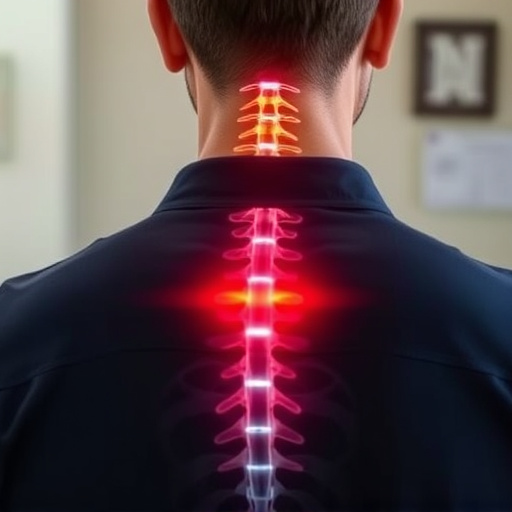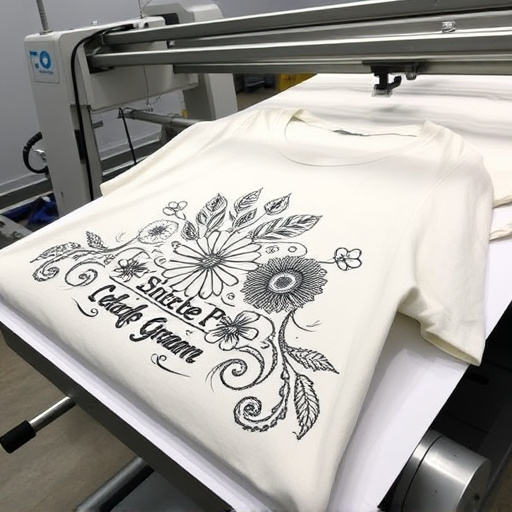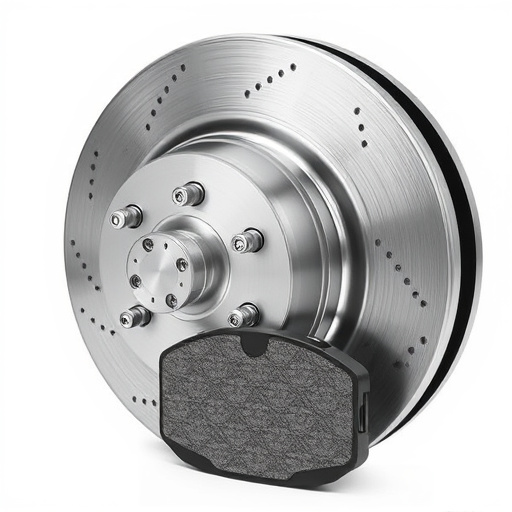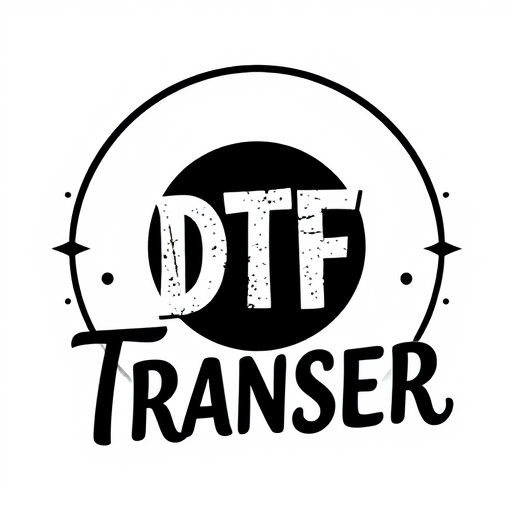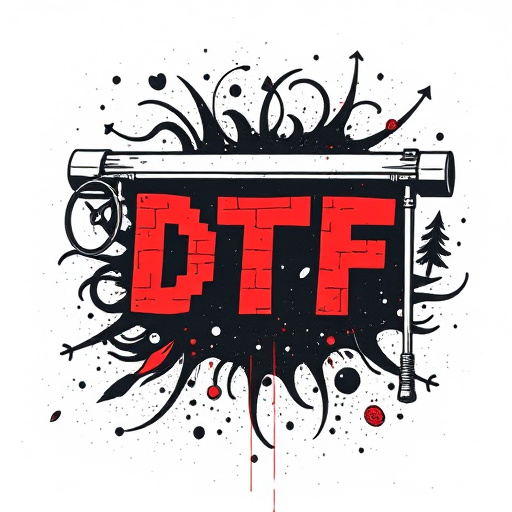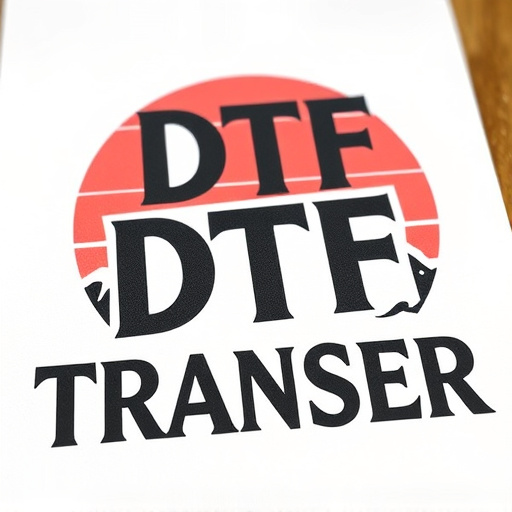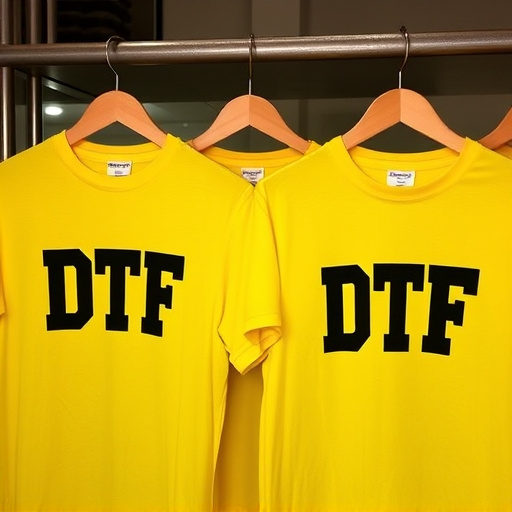Direct-to-film (DTF) transfers have revolutionized printing with their exceptional quality and durability. Using advanced inkjet techniques, DTF prints on surfaces like vinyl, fabric, or metal with superior color resolution, vibrant inks, and intricate detail retention. They withstand outdoor conditions, frequent handling, and moisture without fading or peeling, making them ideal for signage, banners, and promotional materials. The future of DTF printing promises even greater durability, color accuracy, and resolution, expanding its use in diverse industries like film, entertainment, fashion, and sports.
Discover the future of printing with premium direct-to-film (DTF) transfers—a revolutionary technology offering unparalleled durability and intricate detail. This article explores the transformative power of DTF, delving into its understanding, advantages, key features, material choices, diverse applications, and future trends. Unlock the secrets behind exceptional DTF prints and explore how this innovative process is reshaping industries worldwide.
- Understanding Direct-to-Film (DTF) Transfers: A Revolution in Printing Technology
- The Advantage of Premium DTF Transfer Durability and Quality
- Key Features Contributing to Superior DTF Print Detail
- Choosing the Right Materials for Optimal DTF Transfer Results
- Applications and Industries Benefiting from DTF Transfers
- Future Trends Shaping Direct-to-Film (DTF) Printing and Its Impact
Understanding Direct-to-Film (DTF) Transfers: A Revolution in Printing Technology

Direct-to-Film (DTF) transfers have revolutionized printing technology, offering a level of quality and durability that was previously unattainable for many applications. This innovative process involves transferring an image or design directly onto a variety of surfaces, such as vinyl, fabric, or even metal, using advanced inkjet printing techniques. Unlike traditional printing methods, DTF eliminates the need for intermediate steps like film positives or plate preparations, resulting in faster production times and enhanced accuracy.
DTF prints stand out due to their superior color resolution, vibrant inks, and remarkable detail retention. The technology ensures that every pixel of the original design is accurately represented on the final product, making DTF transfers ideal for high-demand items like signage, banners, and promotional materials. Additionally, DTF’s durability is unparalleled; the inks are cured during printing, creating a long-lasting bond with the substrate, ensuring prints withstand outdoor conditions, frequent handling, or even exposure to moisture without fading or peeling.
The Advantage of Premium DTF Transfer Durability and Quality

Premium direct-to-film (DTF) transfers offer a level of durability and quality that sets them apart from standard printing methods. The advanced technology behind DTF ensures that prints are not just vibrant but also resilient, making them ideal for various applications. This durability is particularly advantageous in environments where posters and graphics are frequently handled or exposed to harsh conditions, such as outdoor advertising, events, and trade shows.
With superior detail retention, DTF transfers can produce intricate designs with fine lines, subtle gradients, and complex color palettes that remain crisp and clear even upon close inspection. This attention to detail is crucial for brands aiming to convey high-quality visuals and ensure their messaging is effectively communicated to audiences. Moreover, the longevity of DTF prints reduces waste and costs associated with frequent replacements, making it a cost-effective solution in the long run.
Key Features Contributing to Superior DTF Print Detail

Direct-to-film (DTF) transfers have evolved significantly, offering an unparalleled level of detail and durability in their prints. This superior quality is attributed to several key features. Firstly, advanced printing technologies like UV curing ensure that inks instantly dry and set upon contact with the film surface, resulting in vibrant colors and crisp lines without smudging or running.
Additionally, high-resolution printers capable of achieving 1200 dpi (dots per inch) or more play a crucial role. This resolution allows for intricate details, fine lines, and subtle gradations to be captured accurately in the final DTF prints. The use of premium quality inks that are resistant to fading, chipping, and smudging further enhances the longevity and visual appeal of these direct-to-film transfers.
Choosing the Right Materials for Optimal DTF Transfer Results

When it comes to direct-to-film (DTF) transfers, selecting the appropriate materials is paramount for achieving exceptional results. The choice of substrates and inks plays a pivotal role in determining the durability and quality of the final DTF prints. High-quality, specialized films designed specifically for DTF printing should be the foundation of your project. These films offer superior adhesion, ensuring that the design seamlessly fuses with the surface.
Additionally, opting for vibrant, high-resolution inks compatible with DTF printers is essential. The ink’s ability to capture intricate details and maintain color accuracy directly impacts the visual appeal of the transfer. Choosing materials from reputable manufacturers ensures consistent performance and compatibility, leading to pristine DTF prints that withstand the test of time.
Applications and Industries Benefiting from DTF Transfers
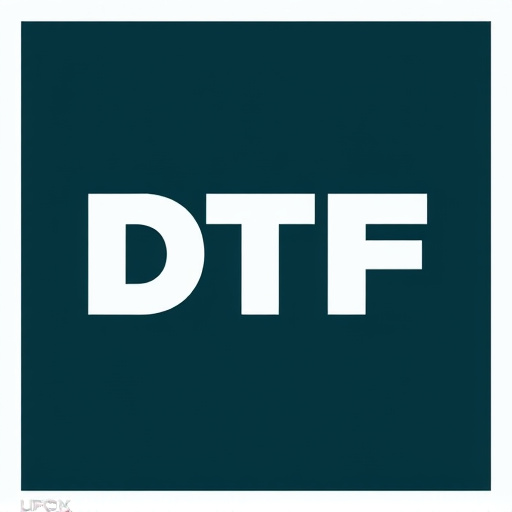
Direct-to-film (DTF) transfers have found their way into a multitude of applications and industries, revolutionizing printing processes. From vibrant signage and display graphics to durable outdoor advertising, DTF offers unparalleled durability and crisp detail. In the world of visual communication, DTF prints enable businesses to create eye-catching, long-lasting displays that can withstand the elements.
This technology is particularly beneficial for sectors like event management, where temporary but visually stunning backdrops and banners are required. Moreover, retail stores leverage DTF transfers for creating dynamic in-store signage, enhancing customer engagement. In the realm of art and craft, artists use DTF to produce high-quality prints on a variety of materials, fostering creativity and innovation.
Future Trends Shaping Direct-to-Film (DTF) Printing and Its Impact
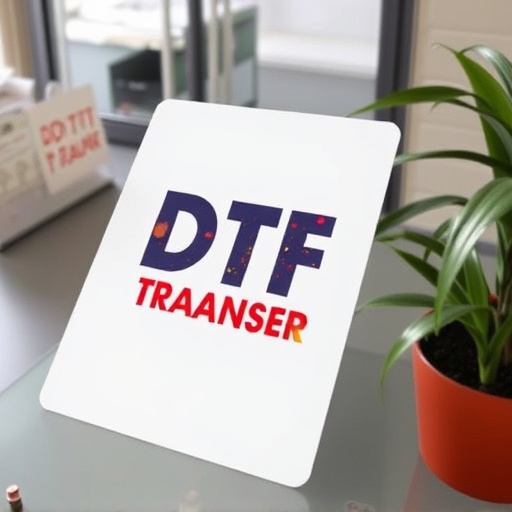
The future of direct-to-film (DTF) printing looks bright and promises significant advancements that will further elevate the quality and versatility of DTF transfers. Innovations in materials science are driving the development of inks and substrates that offer enhanced durability, increased color accuracy, and improved print resolution. This means that DTF prints can expect to achieve even greater levels of detail and realism, making them suitable for a wider range of applications.
Additionally, technological trends like the integration of AI and machine learning algorithms are poised to revolutionize DTF printing processes. These technologies enable precise control over ink deposition, allowing for more efficient and consistent printing. With these future trends, DTF transfers are set to become even more premium, catering to demanding industries such as film, entertainment, fashion, and sports. This shift promises to enhance the overall customer experience by delivering superior-quality DTF prints that meet the highest standards of durability and aesthetic appeal.
